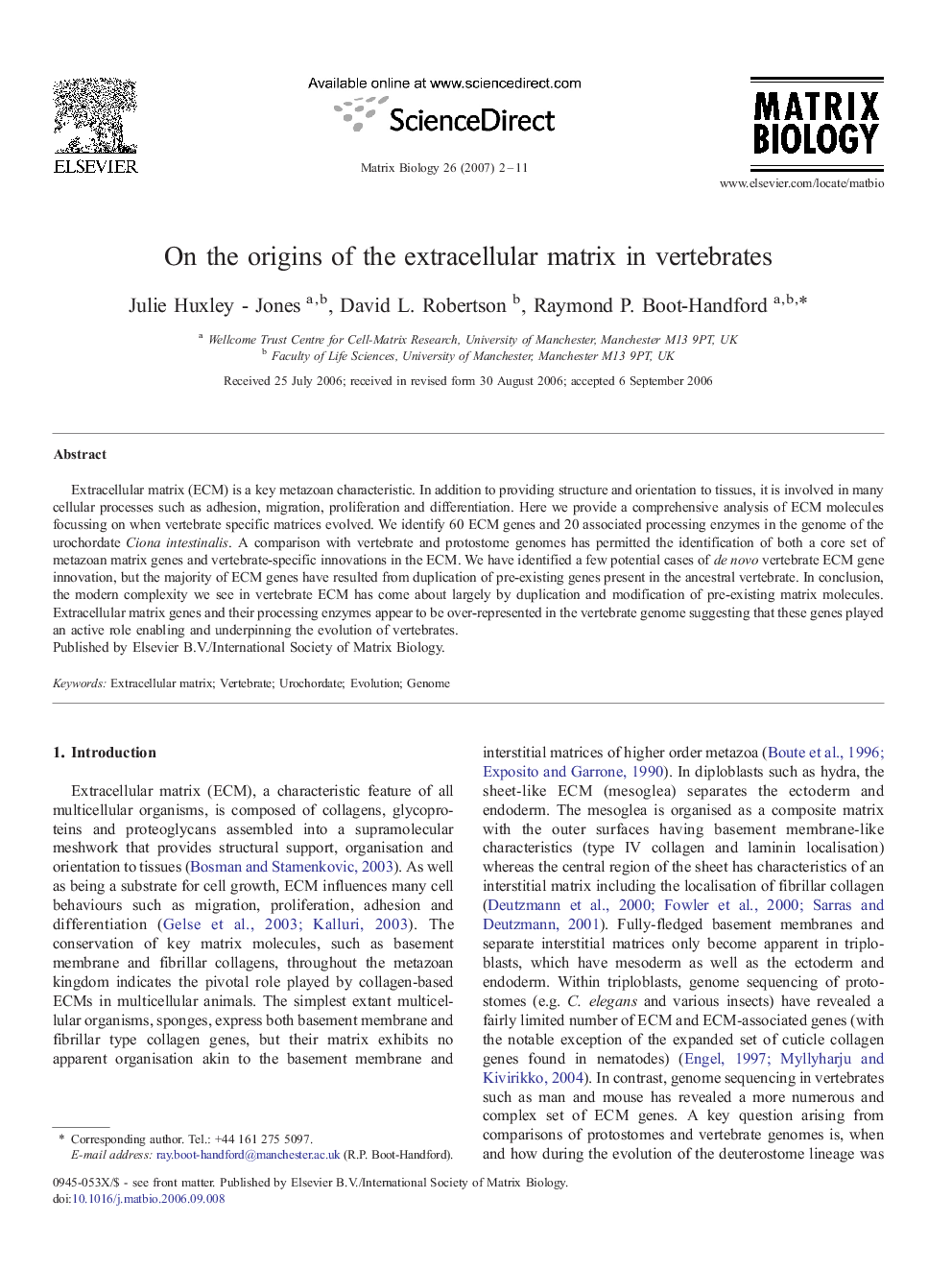| Article ID | Journal | Published Year | Pages | File Type |
|---|---|---|---|---|
| 2145319 | Matrix Biology | 2007 | 10 Pages |
Extracellular matrix (ECM) is a key metazoan characteristic. In addition to providing structure and orientation to tissues, it is involved in many cellular processes such as adhesion, migration, proliferation and differentiation. Here we provide a comprehensive analysis of ECM molecules focussing on when vertebrate specific matrices evolved. We identify 60 ECM genes and 20 associated processing enzymes in the genome of the urochordate Ciona intestinalis. A comparison with vertebrate and protostome genomes has permitted the identification of both a core set of metazoan matrix genes and vertebrate-specific innovations in the ECM. We have identified a few potential cases of de novo vertebrate ECM gene innovation, but the majority of ECM genes have resulted from duplication of pre-existing genes present in the ancestral vertebrate. In conclusion, the modern complexity we see in vertebrate ECM has come about largely by duplication and modification of pre-existing matrix molecules. Extracellular matrix genes and their processing enzymes appear to be over-represented in the vertebrate genome suggesting that these genes played an active role enabling and underpinning the evolution of vertebrates.
